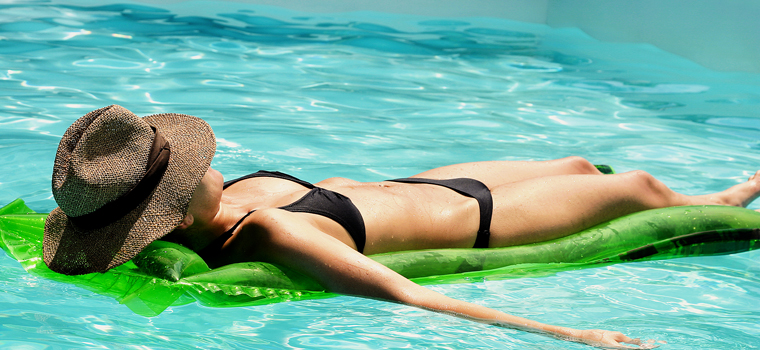Americans take nearly two billion trips to the beach each year, according to the Environmental Protection Agency. As summer approaches and temperatures rise, more people will be planning their trips for a beach getaway. Jumping in the water to escape the heat is a great way to cool off and burn a few calories while spending time with family or enjoying a solo vacation.
So whether you’re looking for a tropical destination or a nearby beach, we’ve got your summer guide for keeping hygienic and safe during the hottest months of the year.
Protect your skin from the sun
While you may know that sunburn is bad for you, it’s important to be informed about exactly how detrimental to your health even one blistering burn can be in the long term. Getting a sunburn at a young age that causes your skin to peel and whelp can double your chances of getting melanoma, according to the Skin Cancer Foundation. Even if the burn seems mild, getting more than five of them in a year at any age can double your chances of certain skin cancers. It is critical to your future health to protect your skin. Lather up with some sunblock and try some of these tips.
- Don’t forget about your lips and eyes – these body parts get sunburned, too. Wear sunglasses and make sure your lip balm has sun protection.
- Reapply sunscreen often, especially if you’re in the water often and even if it’s water resistant.
- Don’t avoid hard-to-reach areas. Our hairline and scalp can be difficult to protect, but are also some of the most susceptible areas as a physician will have less visibility to check for potentially health hazardous moles. Wear a hat!
Keep your eyes out for flags
Warning flags, posted along all public beaches, will tell a swimmer if it’s safe to swim in that area right now. But if you’re expected to follow these warnings, you have to know what they mean.
- Green means conditions are calm and the water is safe.
- Yellow means that the currents are moderate and swimmers should exercise caution, remain alert, and stay near a lifeguard’s post.
- Purple is flown when there’s dangerous wildlife that’s been recently spotted, like jellyfish, sharks, or stingrays.
- Orange indicates an environmental warning like air or water quality and is usually flown with other flags.
Stay hygienic
Fun all day in the sun may leave you susceptible to injury or depress your immune system. This is especially true if you don’t hydrate or if you’re in direct sunlight for hours, which can deplete your body.
Don’t ignore the cut on your foot from the shell or rock. Wash if off, apply an antiseptic and bandage it. And if you’re feeling ill, there are a few things you can catch while at the beach.
- Swimmer’s ear, which can be worsened by micro abrasions from sand in the ear, is common in children.
- Schistosome cercarial dermatitis, or more commonly know as ‘swimmer’s itch,’ is caused by a parasite that lives on beaches and attaches to fish and aquatic birds. When humans are infected by the parasite, itchy rashes appear along the infection site.
- Pink eye is most commonly transmitted through water, spreads quickly and is often exasperated by sand and heat.
Most of the illnesses or infections contracted at a beach can be easily remedied; so don’t wait for the problem to fester. See a physician as soon as possible if you’re worried you or a loved one might have caught something on your island vacation.
Don’t let your dreams of margaritas and toes in the sand be washed away by an unwelcome illness or injury. The best way to ensure your relaxing beach getaway is by taking these simple, yet effective safety precautions for your health. Let us know your dream vacation! Nutex Health, Inc supports you and your family’s health. With our 24 Hour Emergency Rooms in Laredo, we can treat you promptly with our expert team of nurses and ER trained doctors.
April 1, 2016
Written by Bailey Morgan
Content Writer at Nutex Health, Inc

